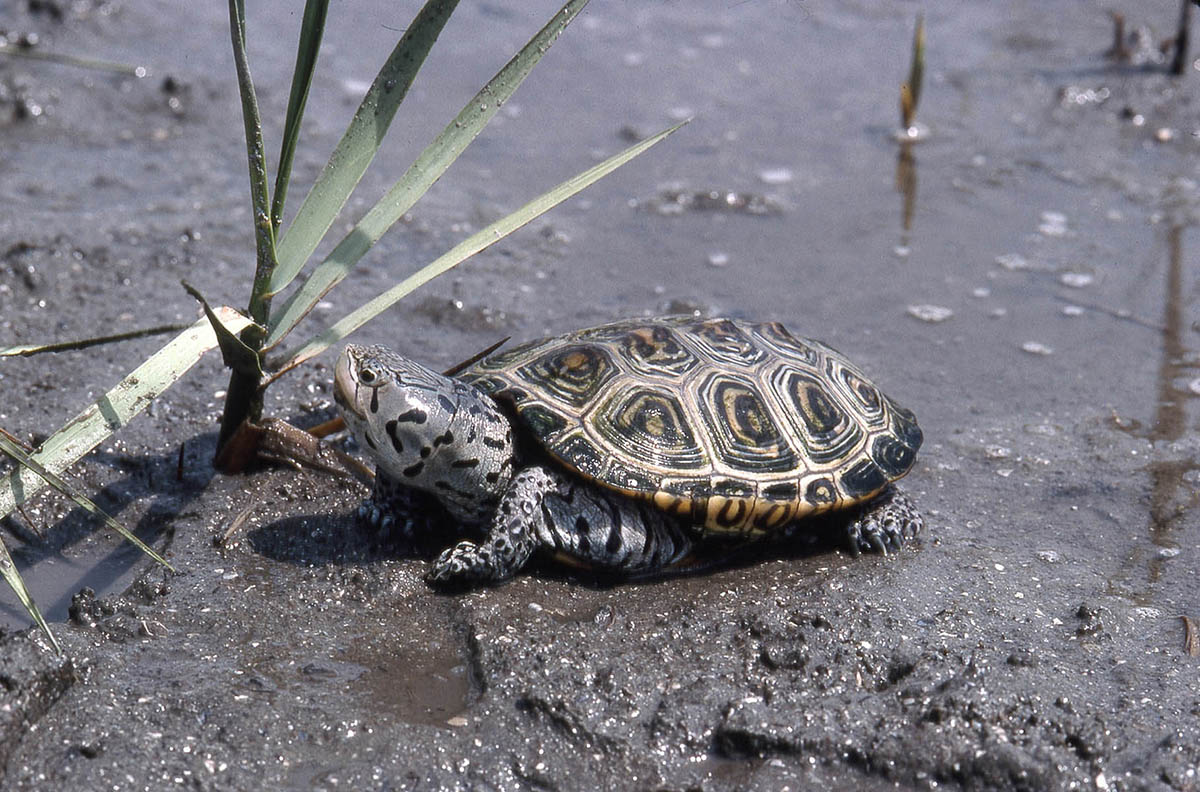
As far as shell-encased reptiles go, sea turtles are the show stealers on the North Carolina coast.
But in the saltwater marshes on the backside of the string of North Carolina’s barrier islands live a lesser-known species of turtle, one that was once so common they were considered a nuisance to fishermen.
Supporter Spotlight
Today, diamondback terrapins, the only turtles that live in brackish water, are listed in North Carolina as a species of special concern.
“Having that type of listing status, it really points to the fact that we need more information to fully understand how the species is doing,” said Hope Sutton, N.C. Wildlife Resources Commission eastern wildlife diversity supervisor. “We know that their population numbers are dramatically lower, but we really don’t have enough data to do a full sort of population assessment and fully understand the population trend in the state.”
This is where you come in.
With some training, your kayak, and your phone, you can take part in the 10th annual “Terrapin Tally,” a state-run, volunteer-led census of these reclusive little turtles.
Why volunteers? Well, the potential habitat area for diamondback terrapins in North Carolina is, in a word, huge.
Supporter Spotlight
North Carolina’s estuarine waters span more than 2 million acres.
Terrapins live in coastal estuaries from Cape Cod to Texas, though the Southeast is a major hotspot for the species.
At the turn of the 20th Century, terrapins were so abundant they were an annoyance to fishermen.
A combination of events – overfishing (terrapins were a food delicacy in the early 1900s), habitat degradation and loss, and being bycatch of the blue crab fishery – has led to their population decline.
The shells of males typically grow 4-6 inches long. Females’ shells are usually larger, growing anywhere from 6-9 inches long.
Terrapins reproduce slowly. The typical nest in North Carolina will have anywhere between four to 12 eggs.
Though their span is between 25 to 40 years, terrapins do not move around a lot. As far as researchers can tell, a turtle will stay within a square-mile area throughout its lifetime.
In the nine years since the tally began, data collected by volunteers has allowed researchers to make at least some definitive statements about diamondback terrapin population trends. Specifically, researchers have been able to identify areas where there are larger concentrations of diamondback terrapin.
This has allowed the tally footprint to expand in recent years from routes mapped along Masonboro Island in New Hanover County to stretches of estuaries at Sunset Beach in Brunswick County to Cape Lookout in Carteret County.
“More people need to be involved,” said Cathy Meyer, who, along with her late husband, Peter, were among the original tally volunteers and instrumental in helping researchers gain access to areas where they could map out trails through the estuary.
The couple caught their first glimpses of diamondback terrapins in the early 1990s when they began exploring the marshes near their home in a waterfront neighborhood in Wilmington.
“Every time we would go through our boat basin, the channel to the Intracoastal Waterway, there would be these little turtles popping their heads up and I was like, wow, this is really cool. We became very fascinated with the turtles and an insatiable curiosity about all things coast led us to explore more and more about terrapins,” Meyer said.
When they were offered the opportunity to take part in the first tally in 2014 they jumped at the chance, excited to not only count terrapin, but to see more people on the water, taking part in what Meyer calls “citizen science.”
“When my husband passed away in 2016, the ‘Terrapin Tally’ was still just a real important part of me and my family and so I’ve just continued on an active role ever since,” she said.
Fellow volunteer Karen Dunn has also taken part in the terrapin count since the tally began in 2014.
Dunn, a North Carolina environmental educator, is a natural fit for the job.
“The fact that as I would kayak through and see these little heads pop up, they’re very elusive, and it’s kind of exciting when you can see them because it’s kind of a rare occurrence. You really have to know what you’re looking for. You just have to really focus on it,” she said.
Volunteers must attend a mandatory training session on how to spot the turtles and record their findings.
There will be two, in-person training sessions, both scheduled for 10 a.m. to noon Saturday, April 13, at the University of North Carolina Wilmington’s Center for Marine Science and at the North Carolina Aquarium at Pine Knoll Shores. Training will also be offered that day and time virtually via Zoom.
Volunteers may choose which location, routes and day they would like to paddle. There are some area businesses that rent kayaks and transport them to and from route accesses.
Times will be scheduled based on the tide and, in the event of inclement weather, a paddle may be canceled.
Volunteers are paired in two-person teams. One person is an observer. The other person is the recorder.
Sutton said she does not want to discourage volunteers, but warns that some may not spot diamondback terrapins. But, even no count counts.
“Zero data is actually really, really important also. We need to understand where these turtles aren’t as well as where the turtles are at this point,” Sutton said.
Paddles are scheduled for later this month, in May and in June.
For more information and to sign up for training visit terrapintallync.org.








